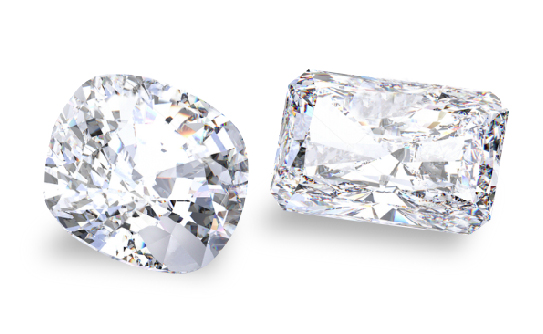Introduction to Diamonds
What Are Diamonds?
Diamonds—those dazzling gems that catch the light in every direction—are much more than just pretty stones. Scientifically speaking, diamonds are crystalline forms of carbon, where each carbon atom is bonded to four others in a tetrahedral structure. This unique arrangement makes them incredibly hard, giving diamonds their coveted status as both jewels and industrial tools.
The Role of Diamonds in Society
For centuries, diamonds have symbolized wealth, power, and love. From ancient royalty to modern engagements, these gems hold a special place in human culture. They’re not just about bling lab grown diamonds vs real diamonds; diamonds are often considered an investment, a status symbol, and a milestone marker.
Understanding Lab-Grown Diamonds
What Are Lab-Grown Diamonds?
Lab-grown diamonds are just like their natural counterparts in chemical composition and crystal structure. Created in controlled environments, these diamonds offer the same brilliance and durability as mined diamonds but come with a modern twist.
How Lab-Grown Diamonds Are Made
Lab-grown diamonds are produced using two main techniques: High Pressure High Temperature (HPHT) and Chemical Vapor Deposition (CVD).
High Pressure High Temperature (HPHT)
HPHT mimics the natural conditions under which diamonds form in the Earth. By applying extreme pressure and heat to carbon, scientists can create diamonds that are chemically identical to natural ones.
Chemical Vapor Deposition (CVD)
CVD involves breaking down gases containing carbon in a chamber to form diamond crystals. This method allows for precise control over the diamond’s properties and can produce high-quality gems with fewer impurities.
Benefits of Lab-Grown Diamonds
Cost Efficiency
One of the most notable advantages of lab-grown diamonds is their cost. They generally cost 20-40% less than natural diamonds, making them an attractive option for those who want high-quality without the hefty price tag.
Ethical Considerations
Lab-grown diamonds sidestep many of the ethical issues associated with traditional mining, such as human rights abuses and environmental degradation. They offer a guilt-free way to indulge in luxury.
Exploring Natural Diamonds
What Are Natural Diamonds?
Natural diamonds form over billions of years under intense heat and pressure in the Earth’s mantle. Their formation process involves natural geological activity, making each diamond unique in its own right.
Formation and Mining
Geological Formation
Diamonds are born deep within the Earth where conditions are perfect for their creation. The natural diamond cycle involves volcanic eruptions bringing these gems closer to the surface.
Mining Techniques
Mining for natural diamonds involves several methods, from open-pit mining to underground digging. While some of these techniques are advanced, they can still be environmentally invasive.
Pros and Cons of Natural Diamonds
Value and Rarity
Natural lab created diamonds are rare and valued for their uniqueness. They have a certain mystique and historical significance that lab-grown diamonds lack.
Environmental Impact
Despite their allure, natural diamond mining has a substantial environmental footprint. It can lead to habitat destruction, water pollution, and other ecological issues.
Comparing Lab-Grown and Natural Diamonds
Visual and Physical Differences
To the naked eye, lab-grown and natural diamonds are virtually indistinguishable. Both types of diamonds exhibit incredible brilliance and fire, making them look nearly identical when set in jewelry.
Durability
Both lab-grown and natural diamonds are equally durable. They score a 10 on the Mohs scale of hardness, making them suitable for everyday wear.
Cost Differences
Lab-grown diamonds are generally more affordable due to their controlled production process. This price advantage can make them a more appealing option for budget-conscious buyers.
Market Perception and Value
Natural diamonds often hold a higher market value due to their rarity and the perception of authenticity. Lab-grown diamonds, while gaining popularity, may not always command the same resale value.
Making the Choice: Lab-Grown vs. Natural
Factors to Consider
If you’re looking to maximize your budget, lab-grown diamonds offer excellent value. They allow you to choose a larger or higher-quality diamond without breaking the bank.
Ethical and Environmental Concerns
For those concerned about ethical issues and environmental impact, lab-grown diamonds present a clear advantage. They provide a conflict-free alternative with a reduced ecological footprint.
Personal Preferences and Lifestyle
Ultimately, your choice may come down to personal preference. If you value the rarity and historical significance of natural diamonds, they may be worth the extra investment. Conversely, if you prioritize cost, ethics, and innovation, lab-grown diamonds might be your best bet.
Conclusion
Choosing between lab-grown and natural diamonds involves weighing various factors, from cost and ethics to personal values and aesthetics. Both types of diamonds offer unique benefits and drawbacks, so the decision often comes down to what matters most to you. Whether you opt for the brilliance of a lab-grown gem or the storied charm of a natural diamond, remember that the value of a diamond is not just in its origins but in the joy and significance it brings to your life.

